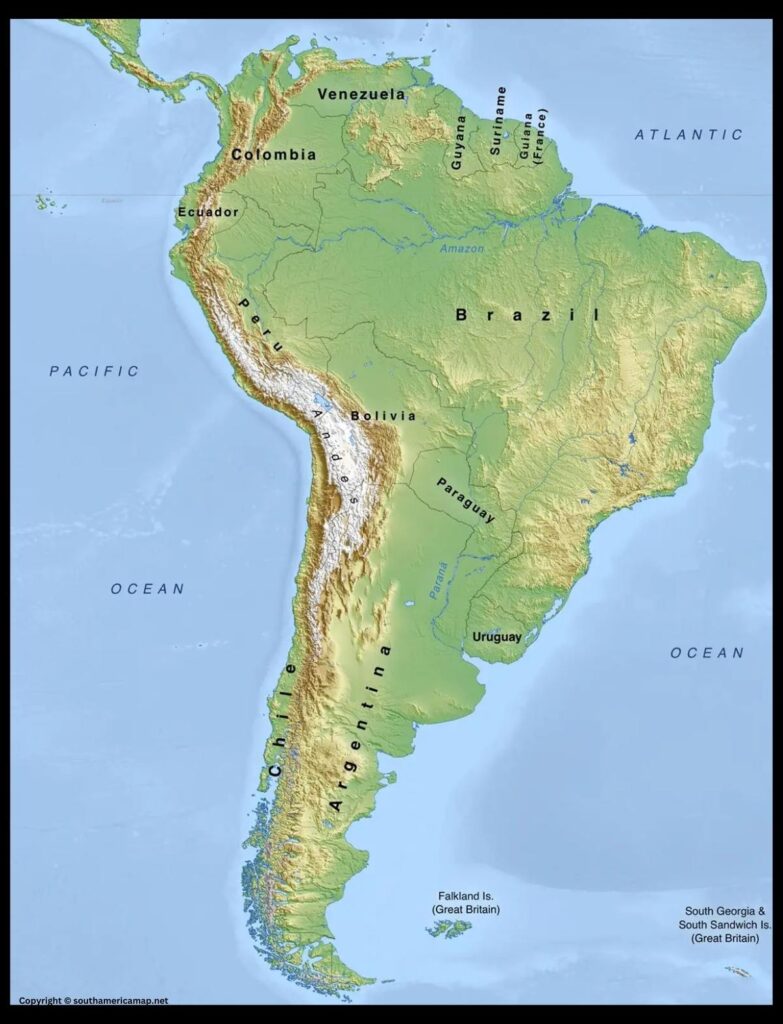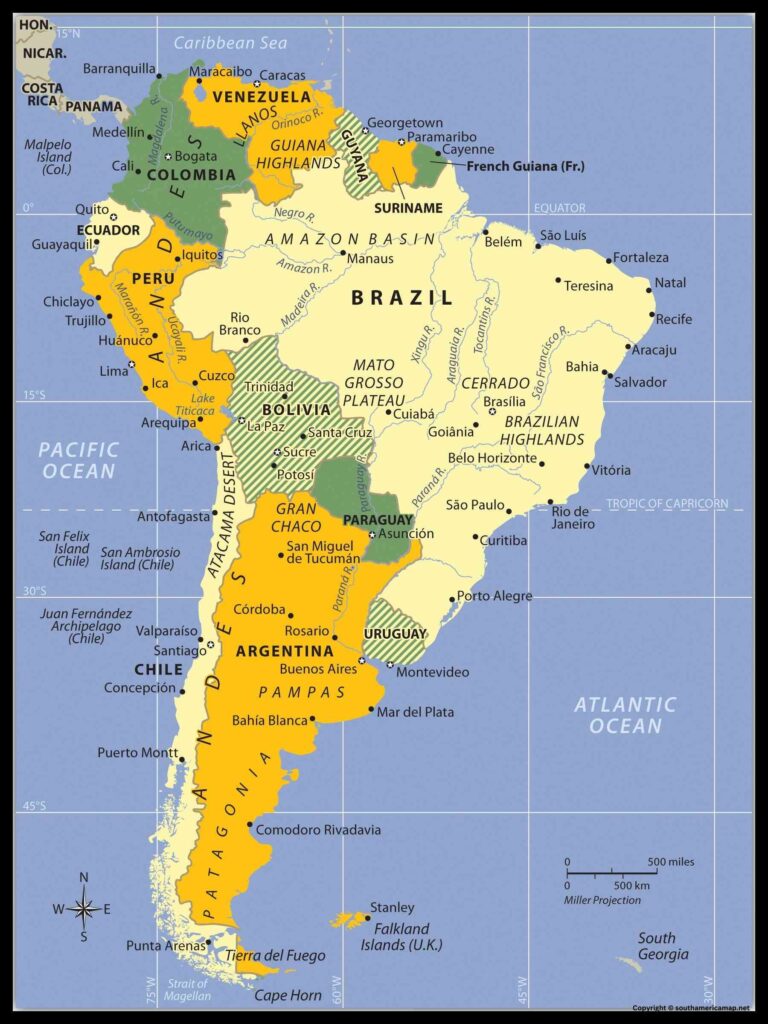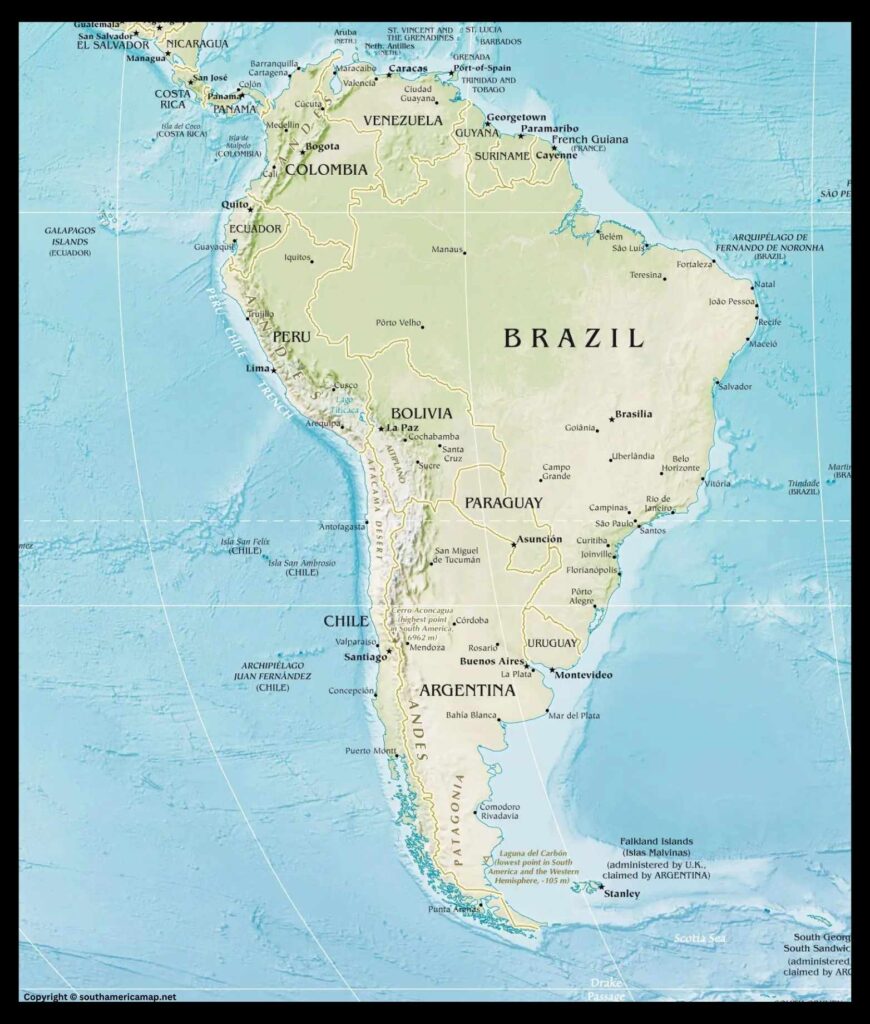A physical map of South America provides a precious source to understand and evaluate the rich geography of the continent. It presents a graphic depiction of land features, water bodies and natural sites, and provides some advantages to people and various fields.
Related Post –
- South America Map with Capitals
- Peru Map
- Amazon River Map
- Map of South America Countries
- Political Map
South America Physical Map
Benefits for learning and education:
- View understanding: A physical map enables students and individuals to imagine how different geographical features are related, such as mountains affect the river systems or the way deserts affect the desert vegetation. The visual form facilitates memory and understanding of the geography of the continent.
- Better geographical awareness: Through learning a physical map, individuals can get information about the location and spread of mountains, rivers, lakes, deserts, Rainforest and other natural structures. Such information provides more praise to the geographical diversity of South America.
- Assistant Research and Explore: A physical map can be employed to design research projects, study the distribution of natural resources and monitor changes in landscape over time. This data is important for scientists, researchers and environmental studies.
South America Physical Features Map
- Planning and navigation: A physical map enables visitors to plan routes, detect unfamiliar land and find an exact point of interest. This journey and makes South America efficient.
- Knowing the natural characteristics: By reading the physical map, visitors can learn about the challenges and opportunities of each landscape. With this information, they can take a better infused decision on their journey.
- Appreciating natural beauty: A physical map emphasizes the breathtaking natural beauty of South America, which exposes spacious mountain ranges, huge Rainforest and various ecosystems. This visual presentation provokes surprise and appreciation to the natural wonders of the continent.
Physical Map for South America
- Search for resources: A physical map helps companies identify areas where resources can be discovered and extracted. This knowledge is necessary in preparing sustainable and accountable resource management practices.
- Infrastructure plans: After knowing the physical characteristics of the land, companies are capable of planning and constructing infrastructure projects such as roads, railways and transmission lines in an efficient and economical manner.
- Market Analysis: Physical maps are used to analyze future markets, find goal areas and understand the availability of resources and infrastructure. Businesses use this information to make strategic decisions about market development and investment.
Benefits for environmental awareness and conservation:
- Tracking environmental changes: Physical maps can be employed to monitor land use, forest loss and other environmental activities. All such data is of great importance when taking initiative of proper protection and stability.
- Identification of weak ecosystems: Studying a physical map, scholars and protectionists may identify susceptible ecosystems to preserve. It gives direction to the conservation process and preserves biodiversity.
- Promoting sustainable development: Physical maps are necessary in planning and executing sustainable development programs. With knowledge of natural resources and availability of sensitive ecosystems, community are capable of durable and responsible practices.


